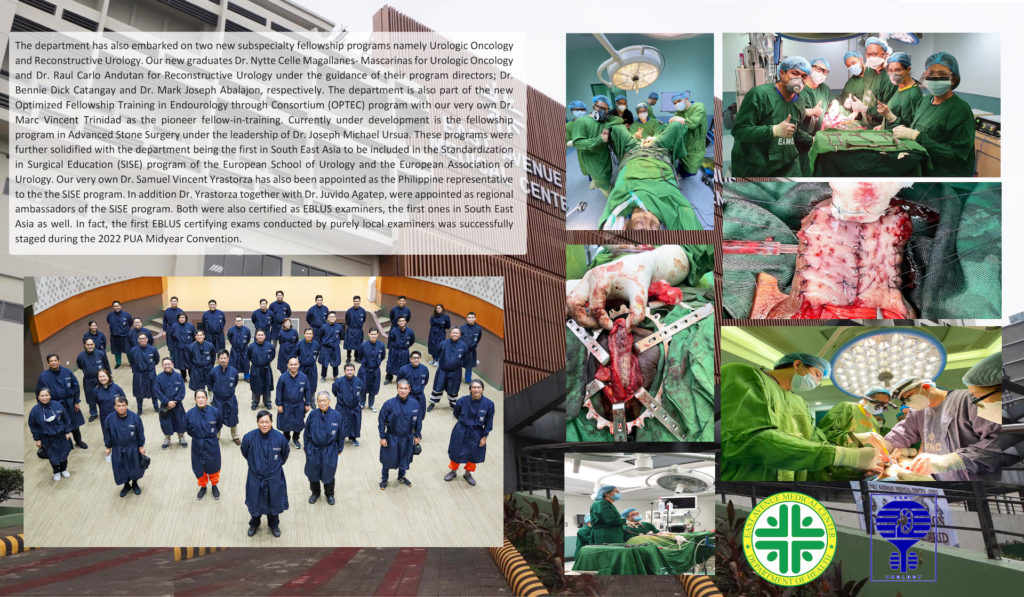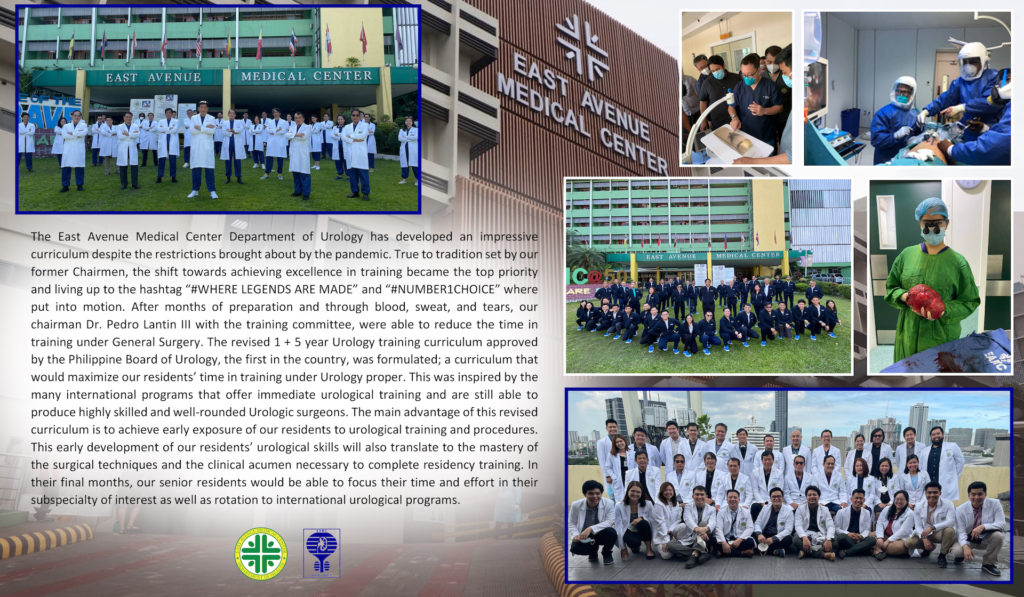The East Avenue Medical Center (EAMC) was established as the GSIS General Hospital under the Government Service Insurance System (GSIS) and was inaugurated by then President Ferdinand Marcos along with First Lady Imelda Marcos on October 8, 1969. It was founded in line with the GSIS policy to extend healthcare services primarily to all its members, and later on even to non-members.
The company operating the hospital, GSIS Hospital Inc., was dissolved on June 9, 1978, and the hospital was renamed Ospital ng Bagong Lipunan, pursuant to Presidential Decree No. 1411 issued by President Marcos.
The hospital was renamed again on November 12, 1986 by then Executive Secretary Joker P. Arroyo, by authority of President Corazon Aquino, to its current name: the East Avenue Medical Center. Throughout its history during the Marcos regime and after the EDSA revolution, the East Avenue Medical Center has stayed true to its goal of providing quality medical care and treatment to all patients regardless of socio-economic status, gender, or creed.
In 1983, under the leadership of then hospital director Dr. Jose P. Caedo, the Section of Urology was established by Dr. Antonio T. Tiongson Sr., who became its first section head. During this time, urology was still a section under the Department of Surgery.
The Urology Residency Training Program was launched in September 1983. Since then, the section started accepting one resident per year for a 3-year training program. In September 1987, the section proudly saw its first graduate, Dr. Jaime C. Balingit.
In 1989, Dr. Ponciano M. Bernardo took the helm and became the second head of the section. With the increasing number of patients and operative procedures, Dr. Bernardo saw that it was imperative to increase the number of residents per year. In January 1993, the section started accepting two residents per year level.
In February 1999, the section finally achieved autonomy from the Department of Surgery, and was recognized as the Department of
Urology. In March of that same year, Dr. Bernardo handed over the reins to Dr. Lester A. Garcia, who became the third chairman of the department.
In 2012, Dr. Jaime C. Balingit became the fourth chairman of the Department of Urology, 25 years since his graduation as the department’s first resident.
In January 2019, Dr. Balingit retired and handed over the reins to Dr. Pedro L. Lantin III, who became the fifth chairman of the department.
The Philippine Board of Urology first accredited the training program in June 1984. Since then it has never lost its accreditation and has persistently passed the requirements set by the board with flying colors. The most recent accreditation was granted by the PBU during its visit in September 2021. The department was granted a Level 4 accreditation, valid until December 2025.
Through the years, the Department of Urology has never faltered in providing excellent training and producing notable graduates who continue to excel even in their chosen subspecialties. As of this year, the department has proudly produced 55 graduates scattered across the archipelago, providing excellent urological care to the Filipino people.
In 2020, the COVID-19 pandemic hit and the department had to extend the training of the residents to comply with the requirements of the Philippine Board of Urology. Despite the setback brought about by the pandemic, a major change in the curriculum of the department has come into place. The curriculum was shifted to 1-year of General Surgery followed by a 5-year clinical urology training, with the goal of early exposure of residents to urology and a provision for subspecialty training. With this revision, thirteen more aspiring urologists are currently undergoing training, inspired by the success of those who came before them and emboldened by the skillful training of the consultant staff.
The Department of Urology currently offers a fully-accredited five-year training program that fulfills the training requirements for certification by the Philippine Board of Urology, Inc. It provides training residents with clinical experience in surgical procedures and in pre- and post-operative management. Progressive development of the resident to surgical maturity is achieved through a planned program of training in general urology. Being a major referral center, it provides adequate material for the investigation and treatment of all aspects of adult and pediatric urology. Residents work under the close supervision of the members of the consultant staff.
The educational program is augmented by various post-graduate courses, conferences, seminars and conventions offered by the Philippine Urological Association, Inc. and other related societies, and the monthly scientific meetings of the Philippine Urology Residents Association. Each resident, supervised by a consultant, is required to undertake research projects in basic and clinical urology.
Presently, the East Avenue Medical Center, a PHIC-accredited tertiary, government-run hospital, has a total bed capacity of 600. Aside from the 90-bed capacity surgical ward on the 4th floor, the Department of Urology has a separate urology ward comprised of 12 beds located on the 6th floor, east wing of the building. Whatever the situation, wherever and whenever it may be, the department never fails to act with passion and flair it may rightfully call its own. On a noble mission, it takes on any challenge with fearless steps and wise discretion guided by its vision.


